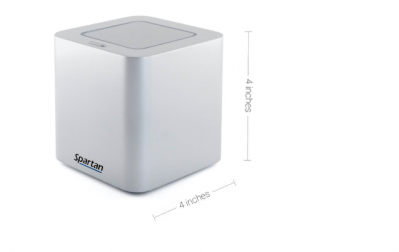Eurofins expands analysis possibilities to 21 species

The firm said an analytical method based on the chip enables simultaneous detection and identification.
It added the test is ‘extremely cost effective’ provided the customer gets a result equivalent to 21 individual tests.
The molecular biology testing unit of Eurofins’ laboratory in Nantes developed the DNA chip testing method to expand the scope of analysis to multiple species in different food and feed matrices.
Using mitochondrial DNA targets, the chip technology enables detection at low thresholds (0.1%) with a short turnaround time (five working days from sample reception).
The test was accredited by COFRAC (French accreditation body), at the start of June after an in site assessment.
Market difference
Dr Andreas Pardigol, molecular biology scientific director of Eurofins food division in France, told FoodQualityNews the biochip is still a PCR-based test and development work started in 2014.
“The difference with other techniques is the use of technology allowing for miniaturization and automation for high throughput, with the best possible sensitivity and specificity,” he said.
“We need to know if the customer wants to detect one or several animals among the 21 species detectable on the chip.
“The test is based on PCR amplification of an animal-specific target DNA sequence, followed by identification of each of the 21 animals by means of species-specific hybridization probes immobilized on the surface of the Biochip.
“Positive results can be easily detected in a chip scanner. Readout and interpretation of positive or negative results is performed by dedicated software, connected to the Eurofins LIMS.
“Within the limits of the validated scope, the test can simultaneously detect up to 20 species in the identical sample, with a detection limit of around 0.1% in samples containing equal amount of each species.”
The qualitative test allows “species-specific” PCR to detect one particular species and other semi-quantitative tests to determine the proportions of the species in the product.
Concern after horse meat
Following the horsemeat crisis in 2013, identification of animal species in food products is a major concern for the feed and food industry in Europe.
Existing analytical methods to detect single species are not sufficient to meet supply chain requirements, such as verifying product composition complies with relevant regulations, is consistent with claims on the label and ensuring absence of undesired species in the product.
The method has been specifically developed for meat and complex and/or processed food.
Complex and/or processed foods have undergone multiple processing steps (e.g. dried, or heat-treated products) or contain multiple ingredients or both.
The screening covers qualitative determination of 21 animal species (14 terrestrial animals and 7 birds): canine, cat, cattle, chicken, equine, fallow deer, goat, goose, hare, mallard duck, muscovy duck, ostrich, pheasant, pork, rabbit, red deer, reindeer, roe deer, sheep, turkey, water buffalo.




















